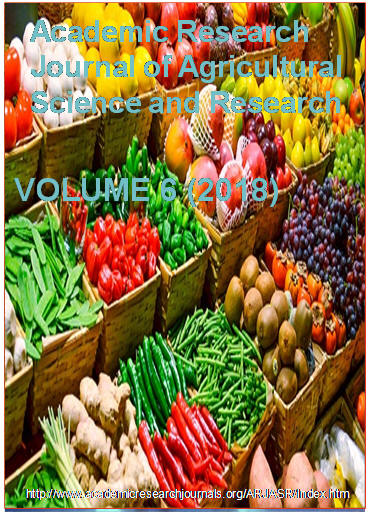| ARJASR |
Academic Research Journal of
Agricultural Science and Research |
|||||||||||||||||||
|
Academic Research Journal of Agricultural Science and Research Vol. 6(7), pp. 433-442. September, 2018. ISSN: 2360-7874 DOI: 10.14662/ARJASRD2018.072 Full Length Research The Effect of Blending Ratio of Durum Wheat, Tef [EragrostisTef (Zucc)Trotter] and Chickpea on Nutritional Composition and Sensory Attributes of Macaroni
Tamirat Kore 1,2 Workineh Abebe 1 and Paulos Getachew2
1Debrezeit Agricultural Research Center, EIAR, P.O. Box 2003, Addis Ababa, Ethiopia. 2Center for Food Science and Nutrition, Addis Ababa University, Addis Ababa, Ethiopia Correspondence should be addressed to: E-mail: tamiratkore9@gmail.com, +251920311237 E-mail: workineh09@gmail.com, +251983680300 E-mail: p_getachew@yahoo.com, +251989821171
Accepted 21 September 2018
Pasta products are commonly made with only durum wheat semolina, which has lower quality in nutrients such as protein, fiber and minerals as compared with other cereals and legumes. Besides, wheat is highly composed of gluten, which induces intolerance in significant part of the human population. Despite these facts, there are limited studies on formulating pasta products from composite flour with other cereals (tef) and legumes (chickpea) of higher nutritional quality. In this study, macaroni was formulated using composite flours of durum wheat semolina (60-100)%, tef (0-40)% and chickpea (0-15)% using Response Surface Methodology (RSM). Results indicated that an increasing proportion of tef and chickpea flour significantly improved the protein, fiber, fat, iron and zinc contents of the macaroni. Blending of chickpea flour only up to 15% with semolina produced a macaroni with comparable sensory quality with semolina macaroni. Protein, fiber, iron, firmness and overall acceptability were deeming as common parameters for macaroni formula. The blend formulation with 74.19% semolina, 10.89% tef and 14.89% chickpea produced a macaroni with improved nutrient content and sensory attributes. In general tef and chickpea flour blends with semolina showed good nutritional composition of macaroni Keywords: Macaroni, tef, chickpea, semolina, Response Surface Methodology, D-optimal.
How to cite this article (APA Style): Tamirat, K., Workineh, A., Paulos, G. (2018). The Effect of Blending Ratio of Durum Wheat, Tef [Eragrostis tef (Zucc)Trotter] and Chickpea on Nutritional Composition and Sensory Attributes of Macaroni. Acad. Res. J. Agri. Sci. Res. 6(7): 433-442 |
|||||||||||||||||||
